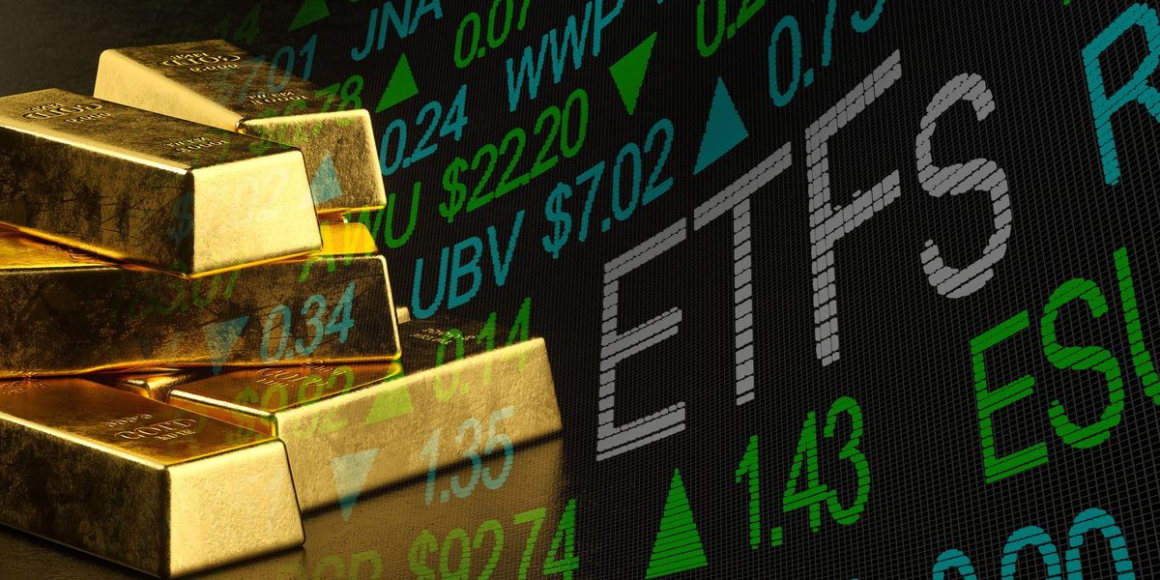The other type of gold ETF invests in gold companies, providing exposure to gold-mining, development and exploration stocks, as well as gold royalty stocks.
Read on to learn about the benefits of adding gold ETFs to your portfolio, the five largest gold ETFs by total assets and popular gold mining ETF options.
Gold ETFs are fairly common today, and are a good choice for investors who want to invest in precious metals without trading gold futures or owning physical gold, such as gold coins or bars.
But gold ETFs are often considered a lower-risk investment, as they have a number of benefits for market participants and can open up a portfolio to diversification.
For example, physical gold is known for being a hedge against economic and political uncertainty, and owning shares of a gold ETF that offers exposure to the gold spot price provides investors with this same security without the hassle of buying and storing the yellow metal.
Since gold tends to rise when the US dollar is weak, purchasing a gold ETF could balance out any investment that has the potential to decline when the greenback does. Conversely, selling gold ETF holdings can be beneficial when the US dollar is making gains.
Gold ETFs that track gold companies give investors exposure to multiple companies in the space rather than having to choose specific stocks. This is an appealing option for those who want exposure to the sector without carrying the risks of investing in an individual stock.
Gold ETFs as a whole also offer security in that they are managed by yellow metal experts, so there is a better chance of making a profit than going it alone. Of course, it is important to keep in mind that, despite their less risky nature, gold ETFs are still affected by the rise and fall of the gold price.
Mutual funds are often compared to ETFs, but due to the fact that mutual funds can only be bought or sold at the close of the trading day, gold ETFs become more beneficial as they can be traded whenever the stock market is open, meaning movement is more liquid and not tied down by end-of-day trades.
Total assets: US$68,640.4 million
The SPDR Gold Shares tracks the spot price of gold bullion and is determined by market forces in the 24 hour, over-the-counter market for gold. This market accounts for most global gold trade, and any quoted prices available to ETF investors reflect the latest available information.
Physical bullion comprises 100 percent of the ETF’s holdings, and its expense ratio is 0.4 percent. It offers investors a way to invest in gold that is much less costly than purchasing, storing and insuring bars or coins.
Total assets: US$29,076.8 million
Like the SPDR Gold Trust, the iShares Gold Trust aims to track the spot price of gold bullion. Its expense ratio is 0.25 percent, and its holdings are allocated entirely to physical gold bullion. The aim is for the trust’s value to reflect the performance of the price of gold.
The physical gold the trust holds is in vaults in New York, Toronto, London and other locations. Investors can purchase and sell shares through a traditional brokerage account throughout the trading day.
Total assets: US$8,269.97 million
Total assets: US$3,459.79 million
The gold that the abrdn Standard Gold Trust owns is held in Zurich, Switzerland, and it conforms to the London Bullion Market Association’s rules for good delivery.
Total assets: US$1,340.55 million
There are several options for ETFs that hold gold mining companies instead of physical gold. For investors looking to gain exposure to gold companies without the risk of holding individual stocks, these are two popular options:
This is an updated version of an article first published by the Investing News Network in 2014.
Securities Disclosure: I, Lauren Kelly, currently hold no direct investment interest in any company mentioned in this article.


Leave a Reply